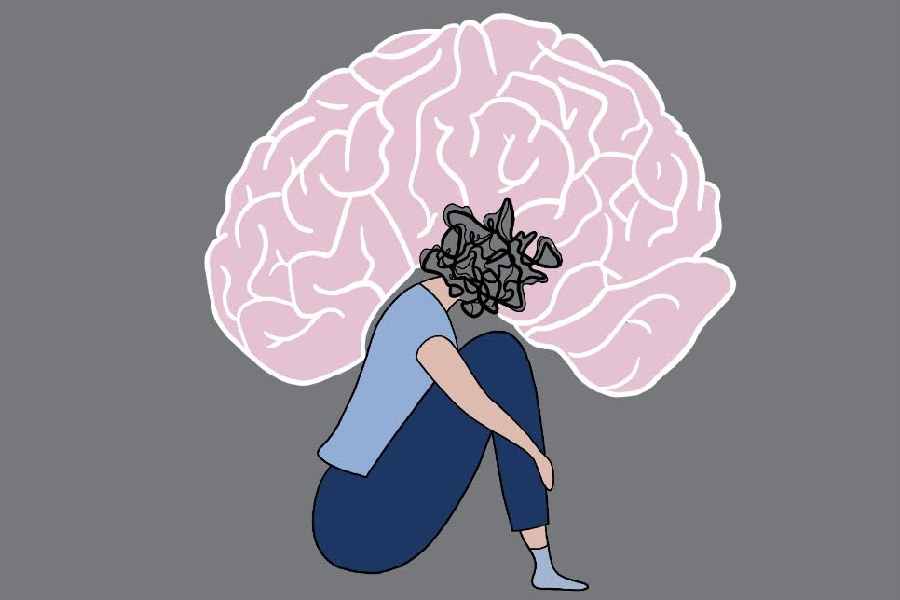Judging by recent headlines and policy ideas, you might think screen time is the only lifestyle behaviour influencing teen wellbeing.
But with young people struggling to deal with mounting mental health issues, it’s crucial we don’t get tunnel vision and instead remember all the lifestyle levers that can play a role.
Our research, published today, tracked Australian high school students from 71 schools across New South Wales, Queensland and Western Australia. Over time, improvements in sleep, fruit and vegetable intake, and exercise were associated with small but significant improvements in mental health.
The reverse was also true when it came to unhealthy behaviours like screen time, junk food, alcohol use and tobacco.
A comprehensive look at adolescent lifestyles Our new study of more than 4,400 Australian high school students looks at a suite of lifestyle behaviours: sleep, moderate-to-vigorous physical activity, sedentary (inactive) recreational screen time, fruit and vegetable intake, consumption of junk food and sugary drinks, alcohol use and smoking.
Firstly, we asked year 7 (students aged 12–13) to report their levels of these lifestyle behaviours and to rate their psychological distress (a general indicator of mental ill-health) using a well-known measurement scale.
Then we examined how changes in each of the lifestyle behaviours between year 7 and year 10 (age 15–16) were linked to psychological distress levels in year 10. Importantly, we accounted for the level of psychological distress participants reported in year 7, as well as their lifestyle behaviours in year 7. This means we can see the average benefits associated with behaviour change, no matter where people started out.
Our research showed increases over time in healthy behaviours were associated with lower psychological distress. Conversely, increases in health risk behaviours were associated with higher psychological distress.
How much makes a difference? On average, when looking at the change between year 7 and 10, every one-hour increase in sleep per night was linked to a 9% reduction in psychological distress.
Each added day of 60 minutes of moderate-to-vigorous physical activity per week was linked to a 3% reduction in psychological distress. Each added daily serve of fruit or vegetables was linked to 4% lower psychological distress.
By contrast, each added hour of screen time was linked to a 2% increase in psychological distress, as was each unit increase in junk food or sugary drinks.
Because drinking alcohol and smoking are less common in early adolescence, we only looked at whether they had or hadn’t drank alcohol or smoked in the past six months. We saw that switching from not drinking in year 7 to drinking in year 10 was associated with a 17% increase in psychological distress. Switching from not smoking to smoking was linked to a 36% increase in psychological distress.
It’s important to note our study can’t definitively say lifestyle behaviour change caused the change in distress. The study also can’t account for changes in a student’s circumstances such as in their home life or relationships. With the baseline survey done in 2019 and the year 10 survey done in 2022, there was also the potential impact of COVID.
But our longitudinal design (tracking the same subjects over an extended period) and the way we structured the analysis does help illustrate the relationship over time.
Our study didn’t measure vaping, but evidence shows that, like smoking, it has clear links with adolescent mental health.
What does this mean for teens and parents? National guidelines for these behaviours set out aspirational targets based on optimum health goals. But movement guidelines and dietary guidelines might seem out of reach for many teens. Indeed, most participants in our study were not meeting guidelines for physical activity, sleep, screen time, and vegetable consumption in year 10.
What our research shows is that a healthy lifestyle change doesn’t have to be all or nothing.
Even relatively small changes – getting an extra hour of sleep each night, eating one extra serve of fruit or vegetables each day, cutting out one hour of screen time, or adding an extra day of moderate-to-vigorous physical activity per week – are linked to improvements in mental health. And stacking changes in multiple areas is likely to stand you in even better stead.
Parents can play a major role in shaping lifestyle behaviours (even into the teenage years!). Expense and time can be barriers, but anything parents can do within their means is a step in the right direction.
For example, modelling healthy social media use, making affordable changes to your grocery shop to improve nutritional content, or even introducing set bedtimes. And parents can gather information so young people can make positive choices around alcohol, tobacco and other substance use including vaping.
The bigger picture Lifestyle changes can support better adolescent mental health, but they’re only one piece of the puzzle. We can’t place the burden of addressing the youth mental health crisis solely on teen lifestyles. There is plenty to be done at a school, community, and policy level to create a society that supports youth mental health.
Young people who are struggling with their mental health may need professional support, which parents and carers can support them to access. Teenagers or young people can also contact ReachOut or Kids Helpline directly for resources and support.
The Conversation
Except for the headline, this story has not been edited by The Telegraph Online staff and has been published from a syndicated feed.











